Is William Alexander aka The Earl & Lord of Stirling, Basking Ridge’s Most Famous Resident? Let’s see if we can answer that question.
William Alexander was considered heir to the Scottish title of Earl of Stirling through Scottish lineage (being the senior male descendant of the paternal grandfather of the 1st Earl of Stirling, who had died in 1640), and he sought the title sometime after 1756. Raised on Broad Street in Lower Manhattan, he moved west to the country. He chose Baskinridge (Basking Ridge) and became what many feel is the area’s most famous resident. Let’s take a look.
Early Years
William Alexander (1726 – Jan 15, 1783) was the son of Secretary & lawyer James Alexander. His mother Mary Spratt Provoost was the widow of David Provoost, a wealthy New York merchant. James and Mary fled from Scotland in 1716 after participating in the Jacobite Rising in 1715. James Alexander (May 27, 1691 – April 2, 1756) was a lawyer, statesman, Secretary and Surveyor in colonial New York. He served in the Colonial Assembly and as the colony’s attorney general from 1721 to 1723.
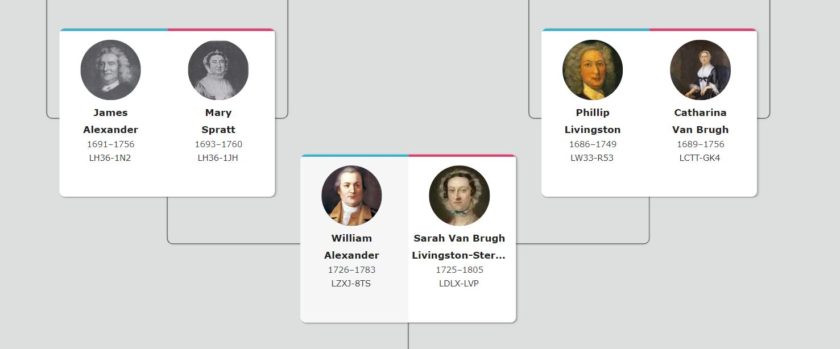
At an early age, William longed to be an astronomer and loved mathematics. But he also longed for the title of “Lord,” something his father never pursued, but a title his grandfather held as the 5th Earl of Stirling. If you have the title of “Lord,” you also have the rights and privileges back at the House of Lords in England. It was also noted that the Stirlings held title to large tracts of land in America and Canada. So if you held the title, you retained the rights to the land that has been acquired by your family. William Alexander, the great-grandfather was once an official Lord Stirling and owned tracts of land including Maine, Nova Scotia, Block Island, Long Island, and large sections of New Jersey.
Lordship Title
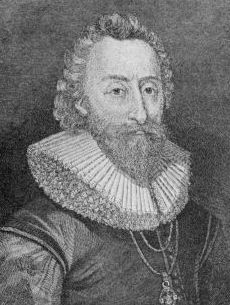
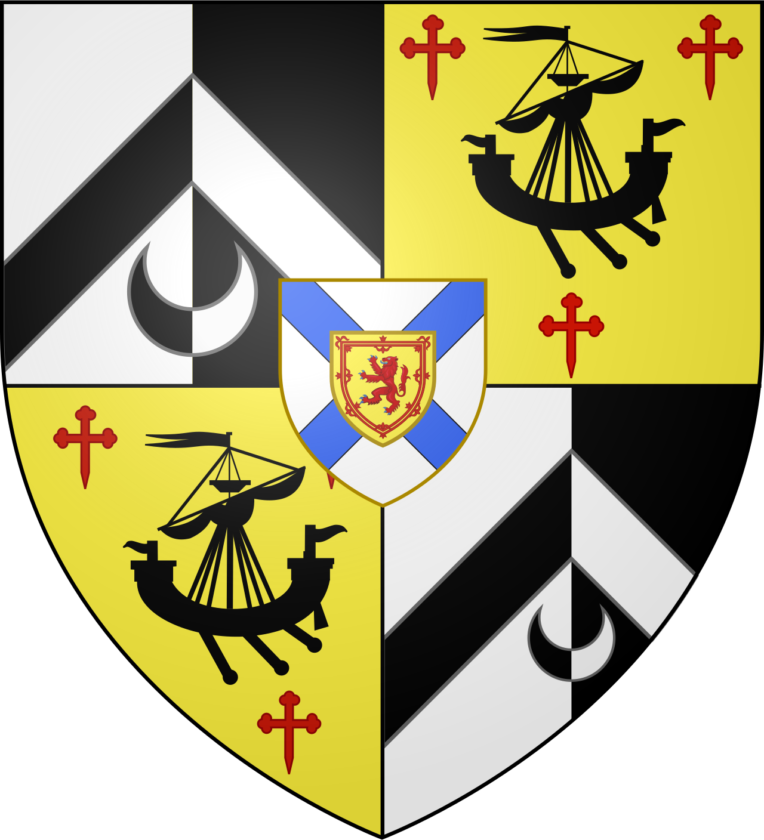
Earl of Stirling was a title in the Peerage of Scotland. It was created on 14 June 1633 for William Alexander, 1st Viscount of Stirling. He was born at Menstrie Castle, near Stirling.
The title of Lord was important to James’ son William even though his father James never pursued the title. The Earl of Stirling title would prove his aristocratic title back to Scotland and let the British know exactly who they were dealing with. William’s claim was initially granted by a Scottish court in 1759 at the age of 33. The ultimate goal was for young Alexander to re-acquire what his family had previously owned. Also, the sponsors would receive money and land if William succeeded.
| Peer | Wife | Eldest son | Younger son | Unmarried daughter |
|---|---|---|---|---|
| Duke | Duchess | [Father’s subsidiary title] | Lord [First name] [Last name] | Lady [First name] [Last name] |
| Marquess | Marchioness | |||
| Earl | Countess | The Honourable [First name] [Last name] | ||
| Viscount | Viscountess | The Honourable [First name] [Last name] | The Honourable [First name] [Last name] |
However, the House of Lords ultimately overruled Scottish law and denied Alexander the title in 1762. He continued to hold himself out as “Lord Stirling” regardless. Even General Washington sometimes referred to Alexander as “My Lord.” But the British often mocked Alexander knowing he was NOT a “Lord of Stirling.”
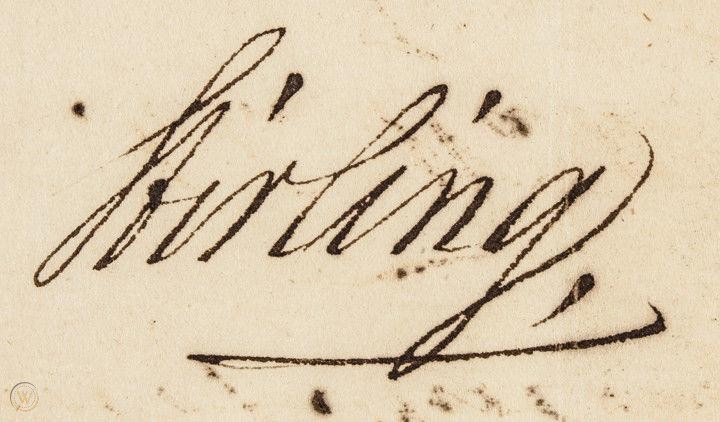
Sarah Livingston as the Lord’s “Lady Stirling”
William Alexander was courting someone from a very connected aristocratic family, the Livingstons, Lords, and the like who would later go on to sign the Declaration of Independence and become the first post-war governor of New Jersey.
On March 1, 1748, William married Sarah Van Brugh Livingston, the daughter of Colonel Philip Livingston, 2nd Lord of Livingston Manor, and her mother Catharine Pieterse Van Brugh Livingston.
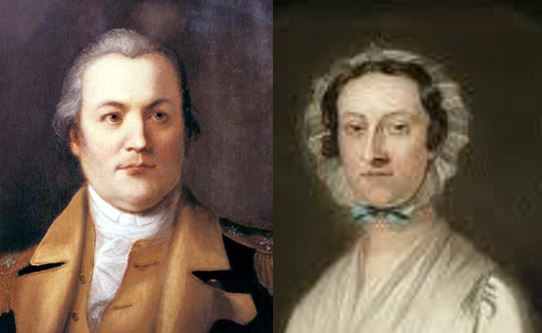
William became “Lord Stirling.” Sara was known as “Lady Stirling.” It has also been said that Elenore Roosevelt is related to the Livingston name.
Sarah was also the sister of Governor William Livingston. William and Lady Stirling had two daughters and a son, Mary, Catherine (Kitty) and William. Mary Alexander would marry a wealthy merchant, Robert Watts of New York. Kitty would marry William Duer. We know very little about William Jr. and are still researching.
Pre-War Moments
Stirling was originally made a colonel in the New Jersey colonial militia. Because he was wealthy and willing to spend his money to support the Patriot cause, he outfitted his unit, the 1st New Jersey Regiment, at his own expense. He distinguished himself early by leading a group of volunteers in the capture of an armed British naval transport.
One of William Alexander’s earliest duties was to authorize the arrest of Royal Governor William Franklin at his home in Perth Amboy. Franklin was not going to budge on his allegiance to Britain. William Franklin (ca. 1730/31-1813) was the thirteenth, and last, of New Jersey’s royal governors. He was the natural son of Philadelphia printer and diplomat Benjamin Franklin, through whose influence William was appointed to the New Jersey governorship on 9 September 1762.
In January 1776, rebel colonel William Alexander intercepted a dispatch from Franklin to British intelligence. Franklin was taken into custody but then released. Following his attempt to convene the legislature, Franklin was arrested in June 1776 and sent under guard to Connecticut, where he was ultimately imprisoned.
William Alexander (Lord Stirling) acquired the Hibernia Furnace in 1771 (Rockaway). Probably the largest iron ore furnace in the state, it was used during the Revolution to provide war materials for the Continental Army. Alexander made a large investment to sustain war iron production.
The Second Continental Congress appointed him Brigadier General in the Continental Army in March 1776. Lord Stirling commanded the 1st Maryland Regiment that fought at the Battle of Long Island.
War Notes
Stirling himself was taken prisoner but had held the British forces occupied long enough to allow the main body of Washington’s army to escape to defensive positions at Brooklyn Heights. Later, under the cover of a foggy night, Washington got his remaining troops across the river to Manhattan.
Because of his actions at Long Island, one newspaper called Stirling “the bravest man in America,” and he was praised by both Washington and the British for his bravery and audacity. Later a commemorative monument was erected at the military engagements and embattled retreat site. The plot of land deeded to the State of Maryland near Prospect Park as a sacred parcel of “blood-soaked Maryland soil”.
Stirling was released in a prisoner exchange, in return for Montfort Browne, the Governor of West Florida, and promoted to the rank of major general. Stirling became one of Washington’s most able and trusted generals. Washington held him in such high regard that during the second Middlebrook encampment in 1779 (while Knox was in Pluckemin), he placed him, headquartered at the nearby Van Horne House, in command of the Continental Army for nearly two months, from 21 December 1778, even though he lived just six miles to the north in Basking Ridge.
One last war tidbit: After General Lee was captured and returned to the Continental Army, General Washington put Lee in charge of the Battle of Monmouth. He was later court-martialed for his actions. And who was selected to oversee that court martial? It was General William Alexander.
Stirling Manor
Remember back in the 1700’s the rich typically held their wealth in land. Alexander wasn’t any different. As Alexander chose Basking Ridge, the English Manor was one of the finest in America. It was typical to have an estate built along a river, similar to Washington’s Mount Vernon. Alexander chose his area along the Black Brook and the Passaic River (which borders the Great Swamp today).
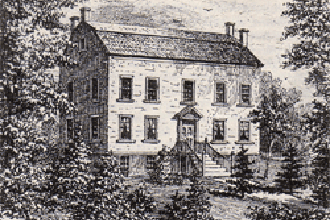
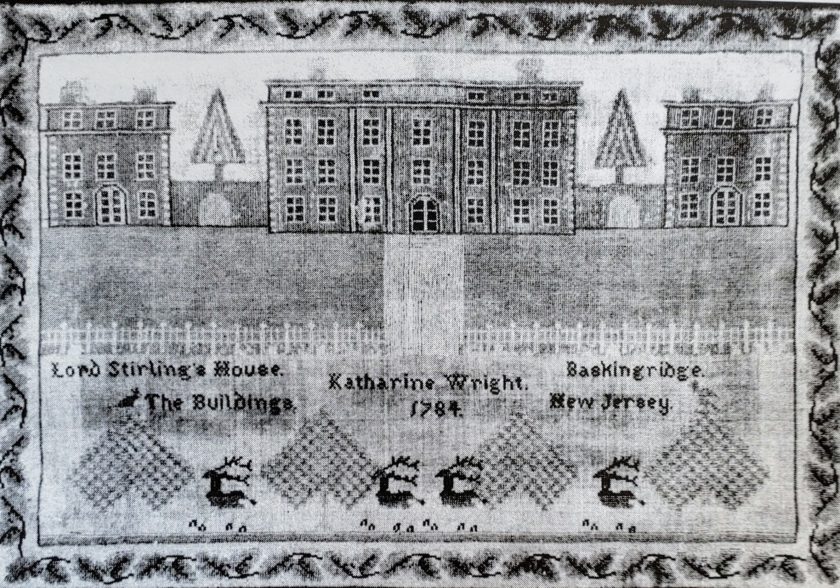
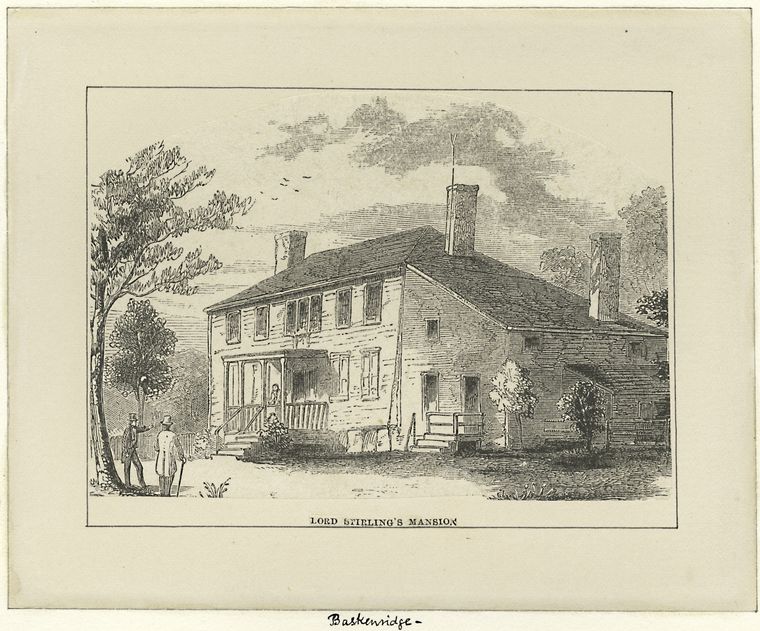
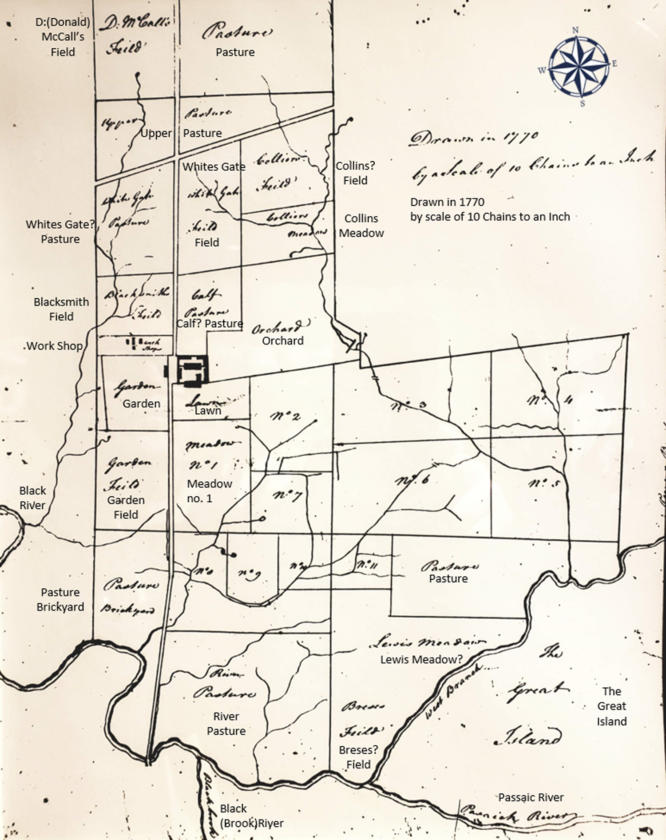
In 1761, Lord Stirling had just returned from abroad. After petitioning the House of Lords for his title, he decided to build his estate. The tract of land, about seven hundred acres, was inherited in 1752 from his father, James Alexander, who was also the surveyor-general of New York and New Jersey.
The seat of Lord Stirling, called by the country-people ‘The Buildings,’ was two miles distant. Designed to imitate the residence of an English nobleman, it was unfinished when the war began. The stables, coach-houses, and other offices, ornamented with cupolas and gilded vanes, were built behind a large paved court behind the mansion. A large hall extended through the able stream called the Black River. A large hall extended through the centre of the house. On one side was a drawing-room with painted walls and stuccoed ceiling. Being taken there as a child, my imagination was struck with a style and splendor so different from all around.
Mrs. Eliza Susan Morton Quincy, wife of Josiah Quincy of Boston who in her youth had a home near the Stirling Manor, has left us a description of it as she remembered it.
In 1768, Stirling sold his home in New York and retired with his family to the Basking Ridge estate. The improvement of his estate and his public position as Surveyor-General of New Jersey and Member of the Provincial Council occupied his energies until the American Revolution.
Here this American nobleman lived the life of a gentleman of fortune; he rode a great coach with gilded panels, emblazoned with coronets and medallions. Lord Stirling was so generous to the poor on the outskirts of his estate that they bobbed and curtsied to him whenever he passed in his carriage. He dabbled in mining and agriculture and lived a life befitting an English Lord.
This was an expensive lifestyle, and by the early 1770s, after spending so much of his inheritance in England trying to claim his lordship, Alexander was bankrupt. Only his position in society had kept him afloat, despite expensive failures in mining operations and a failed sale of lottery tickets for his huge and heavily mortgaged real estate holdings. Ultimately, only his leadership in the Revolutionary Army kept him out of jail.
The council of war met at Lord Stirling’s residence on May 2, 1777. George Washington, Nathaniel Greene, and Henry Knox were in attendance. They discussed a possible attack on New Brunswick, New Jersey, but it was decided that the troops were not strong enough or sufficiently trained to choose such a course of action. General Washington referred to Alexander as “My Lord.”
Basking Ridge’s Biggest Event – Kitty Stirling Wedding
Their wedding took place under tall old trees, heavy with July foliage, on July 27, 1779. Many of the guests, as did the hundreds of pieces of paduasoy, satin, laces, etc., which comprised the bride’s trousseau, had to find their way past sentinels and army lines to be present. Governor Livingston had occasion to issue many passes, – acts which he generally did with very poor grace. All of the neighboring gentry appeared on the scene. The Southards, Kennedys, Hatfields, Lotts, and Mortons. The presents to the bride were very fine for the period. The Duchess of Gordon, always the ardent friend of Lord Stirling, the Earl of Shelburne, and several other members of the British nobility remembered his favorite daughter. It is a sad story that many years after the bright wedding day Lady Kitty Duer, then a decrepit old woman keeping a boardinghouse in New York City, was forced by poverty to part with the souvenirs of the happiest day of her life.
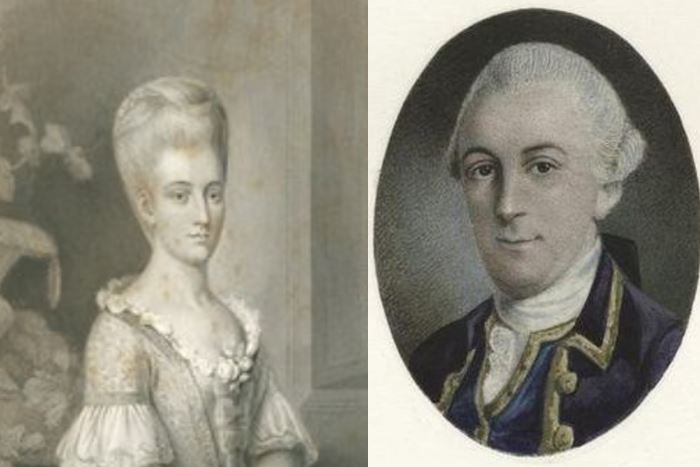
From family tradition we learn that the bride was gowned in white, and made a beautiful picture as she stood by the commanding figure of General Washington, under a cypress tree, awaiting the bridegroom’s coming. After the knot was tied, the ladies, escorted by the brilliantly uniformed officers, – army affairs were then in a better condition than earlier in the war, – trained their gay petticoats over the lawn to the manor, where one of those bounteous old-time collations was served. Lady Stirling was presented by George Washington as she awaited her future husband, Colonel William Duer.
Later, when the young people were deciding to play games, – “Langteraloo,” ” Kiss the Bride,” ” Put,” and all the forgotten merrymakings indulged in at weddings, – a clamor arose outside the house.
The guests, rushing to the windows, found the house surrounded by soldiers from a nearby camp, all shouting with lusty voices for a view of the bride. Then it is we obtain the prettiest picture of any scene in Lady Kitty’s career, as she steps out again upon the grass in her white satin slippers and all her wedding finery to receive the congratulations of her father’s fellow campaigners. They gave them to her individually and then filed away with great satisfaction.
The fete for Lady Kitty’s marriage was Lord Stirling’s last entertainment ever given in the manor house. The private affairs that he had neglected for his sword gradually grew from bad to worse, and upon his death, at the close of the war in 1784, he left his family only an honored name. Through her wealthy marriage, Lady Kitty Duer continued to live in New York with all the luxury to which she had been accustomed at her father’s Jersey home.
Yes – William Alexander owned Island Beach State Park
The Island Beach State Park area was, in fact, an island, separated from the rest of the Barnegat Peninsula by an inlet. By the time of the American Revolution, it was mostly owned by William Alexander, Lord Stirling, who would become one of George Washington’s most trusted generals. Some maps of the time call it Lord Stirling’s Beach or 9 Mile Beach.
Lord Stirling’s land holdings included Island Beach. In the 1700’s, Island Beach was known as Lord Stirling’s Isle.
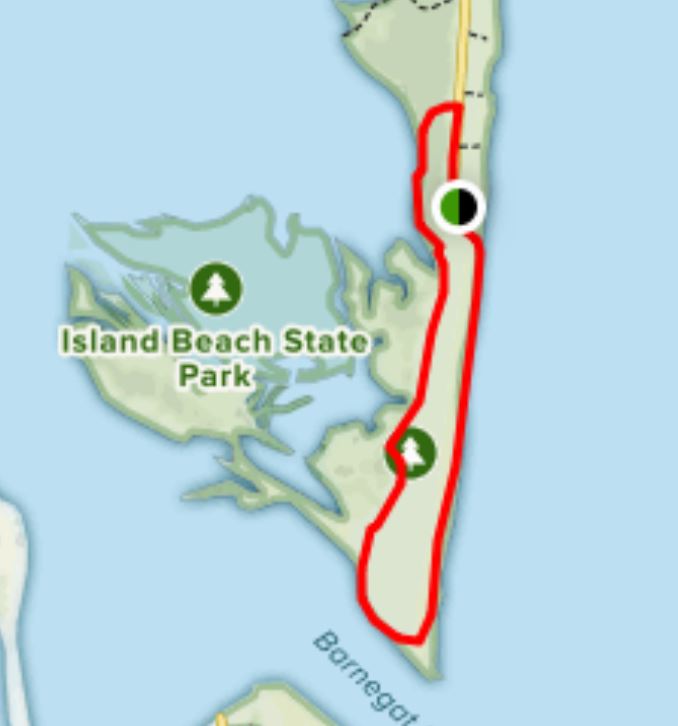
In July 1761, William Alexander assumed the title. Standing at the base of Barnegat Lighthouse looking north across Barnegat Inlet, we can see Island Beach State Park. Google Maps tells us it is 50 miles away and will take over an hour to drive there. From a distance, the park looks like a time capsule of the Jersey Shore 200 years ago.
Some of the Alexander Holdings
“I have taken and levied on a certain tract of land which was William Alexander’s, Earl of Stirling, at the time of his death, situate, lying and being in the Township of Dover, called by the name of ‘Island Beach’ to the value of six pence, which remains in my hands for want of a buyer.”
In 1790, the Monmouth County sheriff posted this notice
SIX PENCE? Well, that’s 1/2 a SHILLING with 20 SHILLINGS equaling a POUND STIRLING. We’re talking $0.06 back in 1790. #THEIVES!
Alexander Built Fort Lee and Fort Washington
Colonel Alexander was put in charge by General Washington in 1776 to fortify the heights of New Jersey and New York. He later proclaimed the Jersey reinforcement Fort Lee and the New York fortification of Fort Washington.
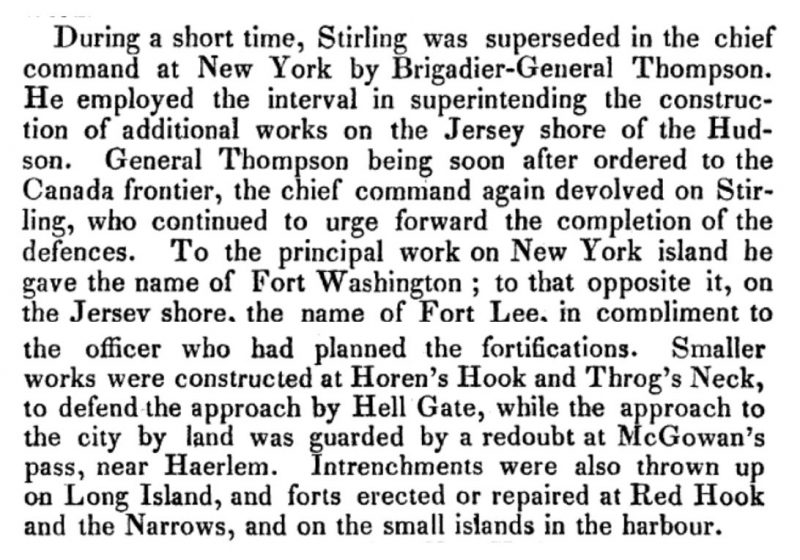
Alexander’s Viticulture (Winemaking)
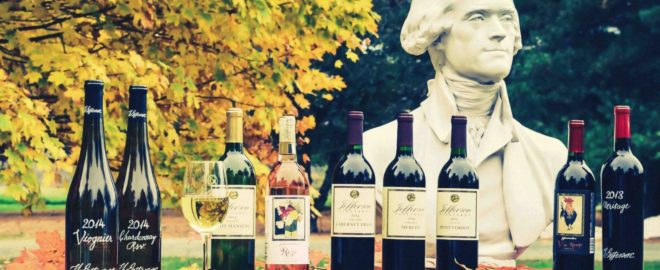
It was known that William Alexander was an accomplished mathematician who loved astronomy and horse breeding, and Stirling was also a devoted student of winemaking. Like Jefferson, Stirling dedicated a large portion of his estate to growing grapes to produce locally produced vintage wine. It was said that the grapes originated in Italy.
The Royal Society of Arts wanted to see the colony grow to produce grapes. With some awareness of this background of failure, the Society in 1758 offered a premium of 100 pounds to the colonists who, within seven years, should be the first to produce five tons of red or white wine of acceptable quality.
In 1767, through William Alexander’s gardener, Thomas Burgie, he advised the society that he had planted 2,100 vines. Earlier, in 1763, he had explained to his friend, the Earl of Sherburne, the difficulties that confronted an American viticulturist and had made a plea for governmental encouragement of such projects.
“The making of wine [he wrote on 6th August], also, is worth the attention of Government. Without its aid, the cultivation of the vine will be very slow; for of all the vines in Europe, we do not yet know which of them will suit this climate; and until that is ascertained by experiment, our people will not plant vineyards; few of us are able, and a much less number willing, to make the experiment. I have lately imported about twenty different sorts, and have planted two vineyards, one in this Province [New York] and one in New Jersey; but I find the experiments tedious, expensive, and uncertain; for after eight or ten years’ cultivation I shall perhaps be obliged to reject nine tenths of them as unfit for the climate, and then begin new vineyards from the remainder. But, however tedious, I am determined to go through with it. Yet I could wish to be assisted in it, I would then try to a greater extent, and would the sooner be able to bring the cultivation of the grape into general use.”
William Alexander
In 1767, the Royal Society of Arts awarded Lord Stirling a gold medal for accepting the society’s challenge to establish viticulture and winemaking in the North American colonies by cultivating 2,100 grape (V. vinifera) vines on his New Jersey estate.
I have lately imported about twenty different sorts, and have planted two vineyards, one in this Province [New York] and one in New Jersey; but I find the experiments tedious, expensive, and uncertain; for after eight or ten years’ cultivation I shall perhaps be obliged to reject nine tenths of them as unfit for the climate, and then begin new vineyards from the remainder. But, however tedious, I am determined to go through with it. Yet I could wish to be assisted in it, I would then try to a greater extent, and would the sooner be able to bring the cultivation of the grape into general use.”
William Alexander
Side Note: The most expensive bottle of wine ever sold at auction was offered at Christie’s in London, on December 5, 1985. The bottle was hand blown dark-green glass and capped with a nubby seal of thick black wax. It had no label, but etched into the glass in a spindly hand was the year 1787, the word “Lafitte,” and the letters “Th.J.”
Thomas Jefferson collection
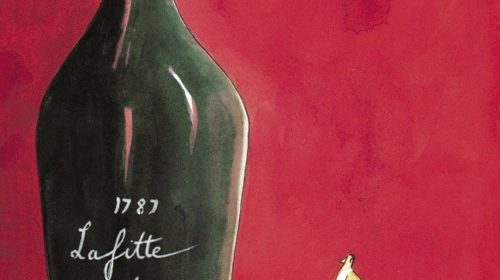
Source: New Yorker Magazine
What Happened to “The Buildings” at the Stirling Manor?
Shortly after Alexander died in 1783, the estate was unoccupied. Numerous attempts to gain funds to maintain the house were petitioned to Congress to no avail. It was hoped that Lady Kitty would visit after she moved to New York, but she didn’t. After years, its glories soon departed. Before the advent of the next century, it was a scene of ruin. The drawing room, with its stuccoed ceiling and decorations of goddesses and cupids, where Lord Stirling and his daughters sang hymns to the accompaniment of a little London spinet, still in existence, was in total disrepair. The tiled courtyard, where many a lordly coach, had rumbled, was broken up, and the Stirling gilt coach, itself a reminder of Sir Charles Grandison’s day, was a roosting place for fowl. The entire estate became a dreary picture of neglect and ruin.
For the next 40 years, it was said that the manor fell into disrepair. Read the Story
It was written that 10 years after staying as a winter resident, Nathaniel Green visited the Stirling Manor: “In faded majesty, as if to mourn the dissolution of an ancient race. It’s grand hall and decorated drawing room were being used as a “store-house” and piled with sacks of corn and wheat. Pigs and poultry roamed at will in the paved quadrangle, and its surrounding stables and coachhouse were fast going to ruin.”
Nathaniel Green – Somerset County Historic Quarterly Volume 2 – Somerset County Historical Society, 1913
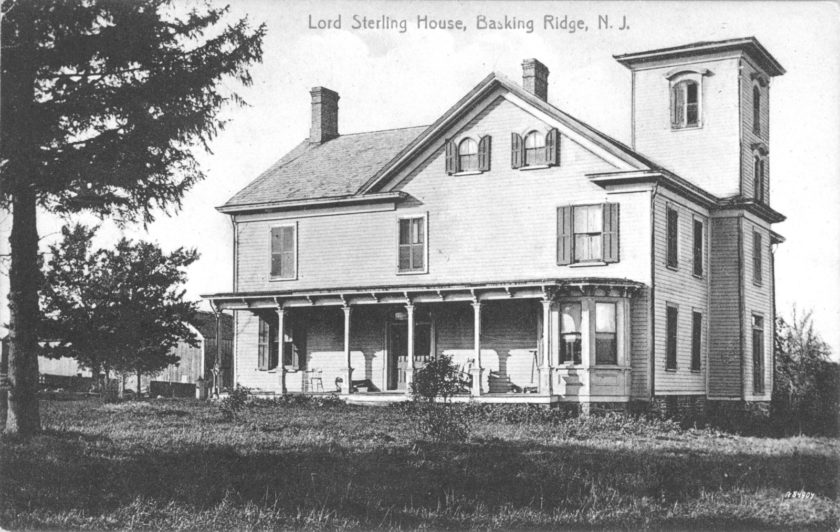
Then in 1840, the estate changed hands and was remodeled in what is referred to as Italianate architecture. The estate stayed as pictured until 1920 when a major fire destroyed the building. Today, there is a home on the original foundation. Each year during the Lord Stirling Festival in Basking Ridge, part of the original Stirling Manor house foundation still exists under the house now occupying the site. On this day of the year, as part of the festival, the cellar is open to the public for tours. You might call it one of America’s first wine cellars.
Two brick buildings are all that remain of the Lord Stirling/William Alexander estate. Research has established that these were auxiliary buildings related to farm life (granary, farm office, perhaps used by domestic servants). Archeological digs are ongoing on the site, which is owned by the Somerset County Park Commission. It was entered on the State Register in 1976 and the National Register in 1977.
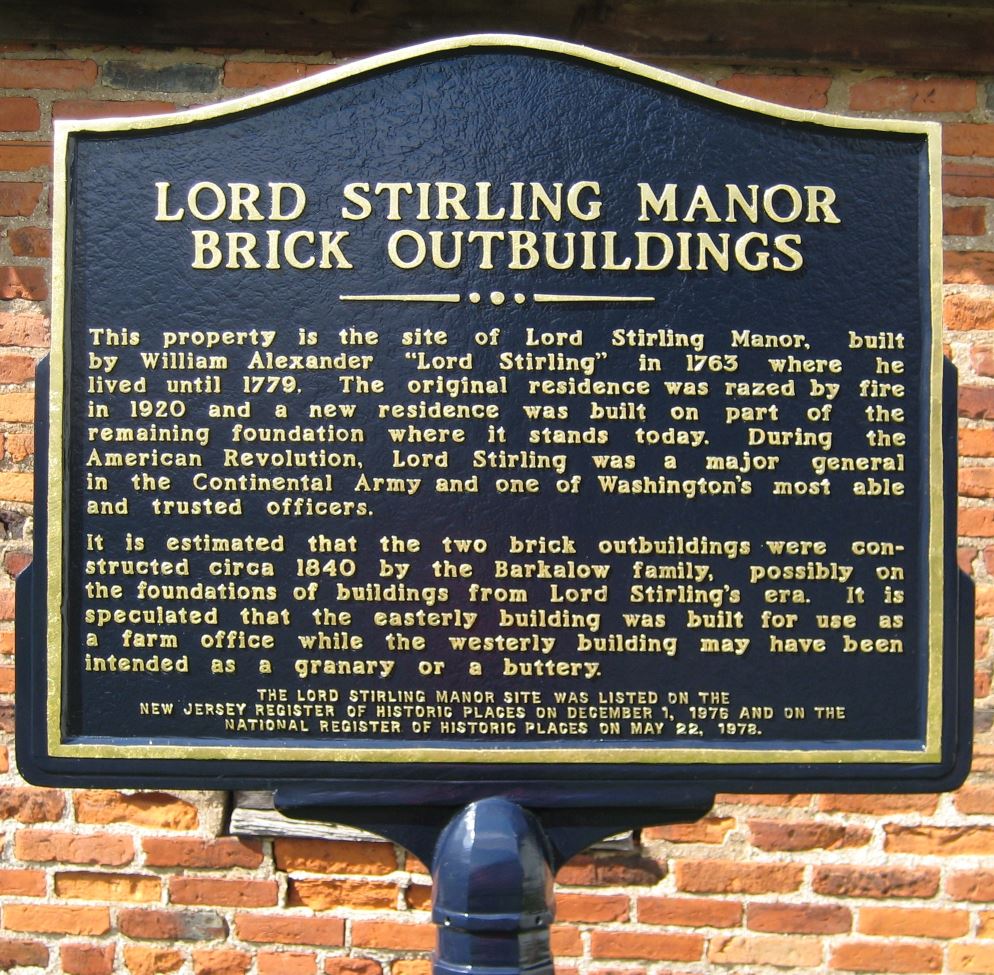
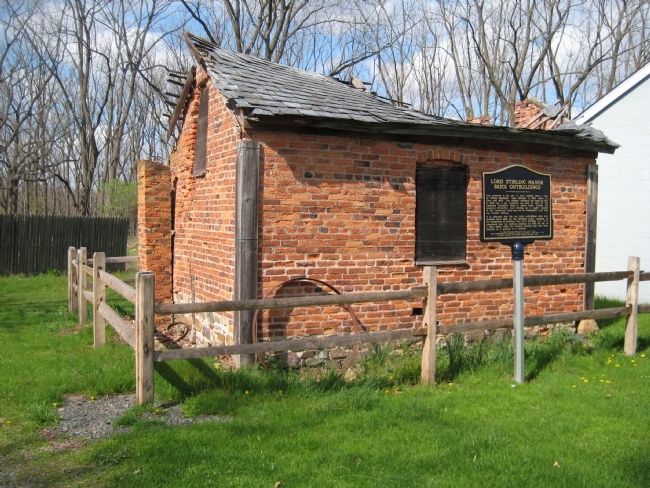
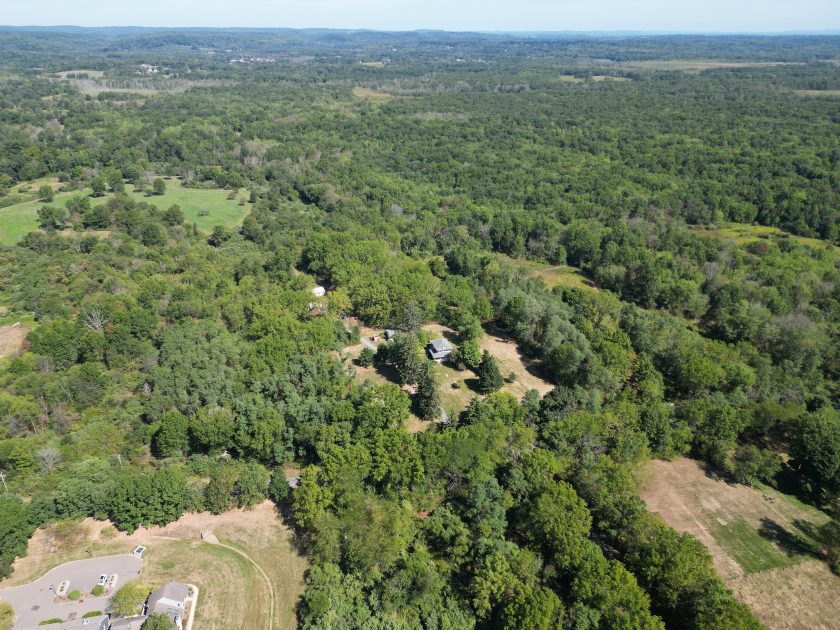
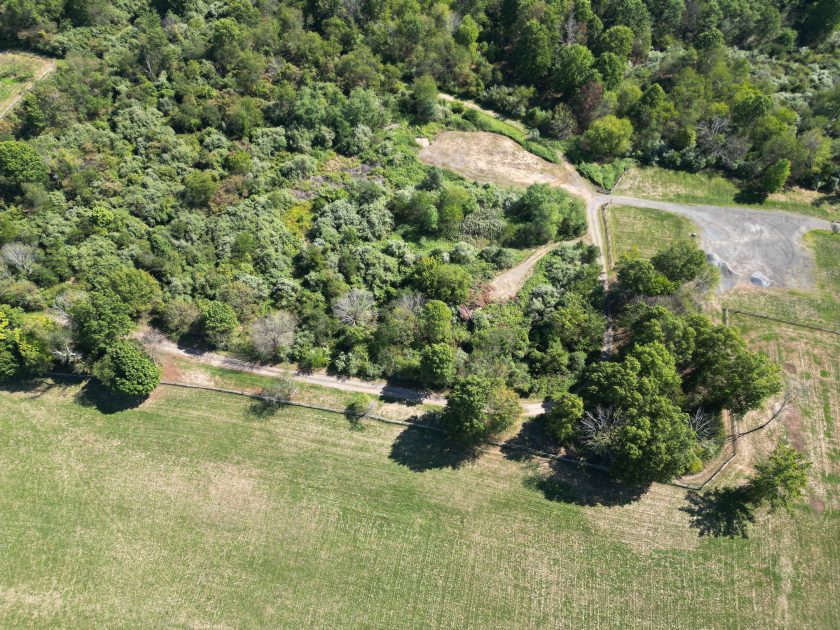
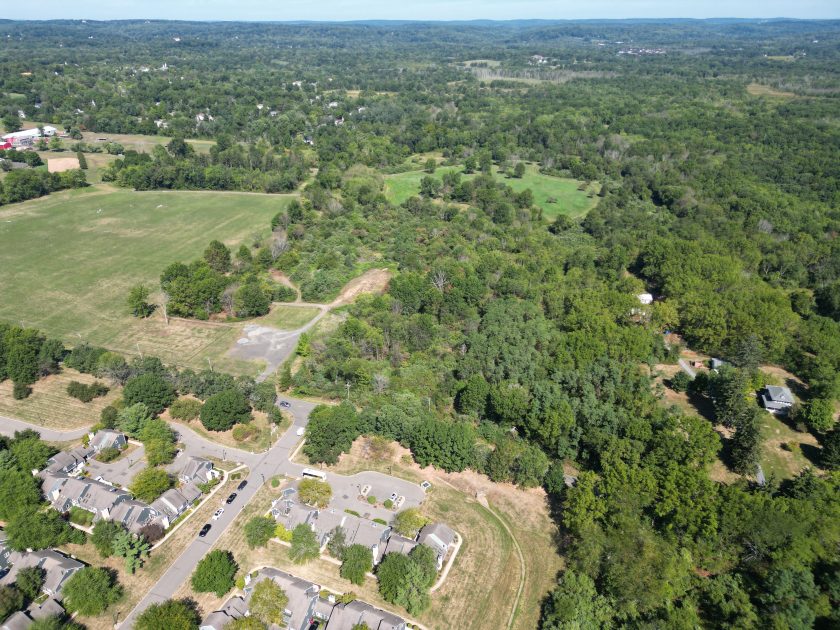
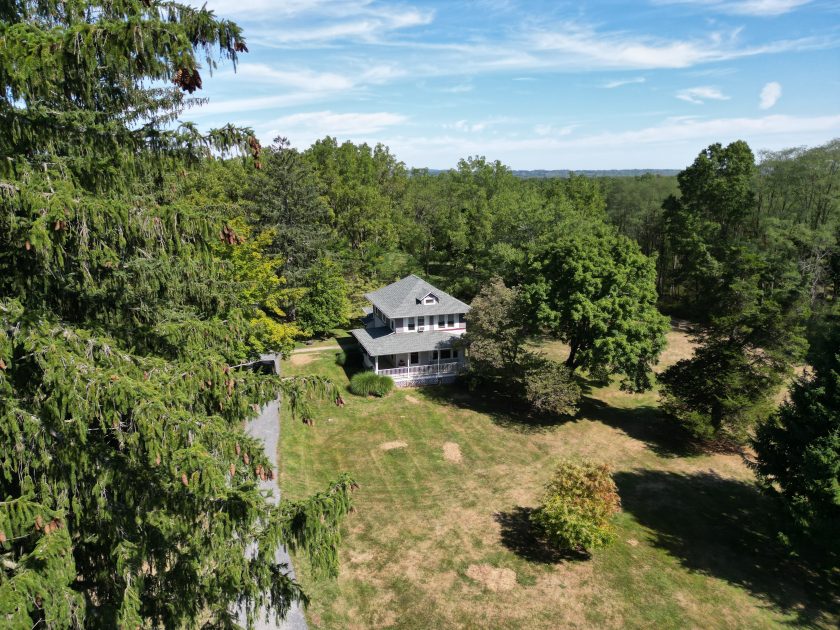
Research has established that these were auxiliary buildings related to farm life (granary, farm office, perhaps used by domestic servants). Archeological digs are ongoing on the site owned by the Somerset County Park Commission. They were entered on the State Register in 1976 and the National Register in 1977.
Final Days
Sadly, Stirling didn’t get to experience in the official end of the war in 1783. Known to imbibe, Alexander was in poor health, suffering from severe gout and rheumatism, and died in Albany on the 15th of January 1783 just months before the Treaty of Paris was signed. He also died as a pauper, heavily in debt leaving nothing to his children.
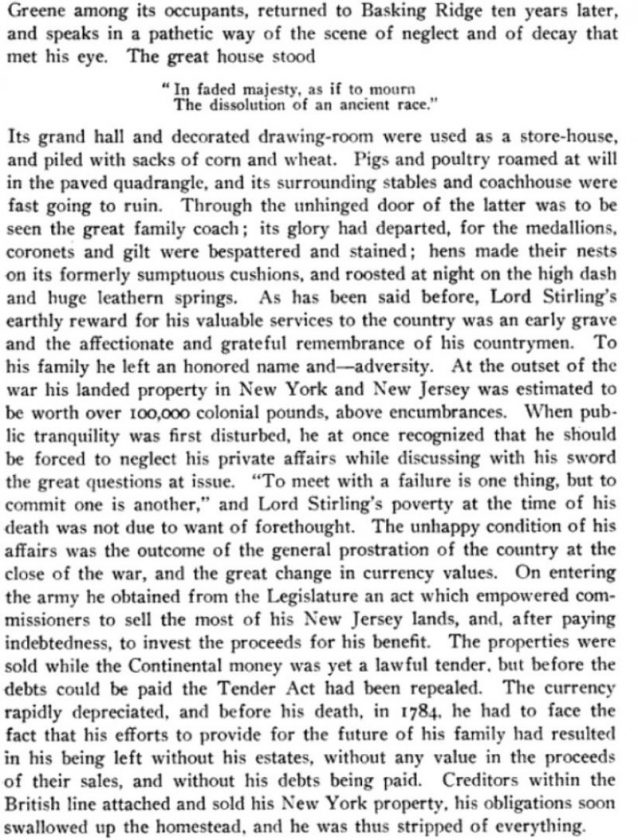
William Alexander died on January 15, 1783, at age 57. He is buried in the Trinity Church graveyard in lower Manhattan alongside his father James Alexander.
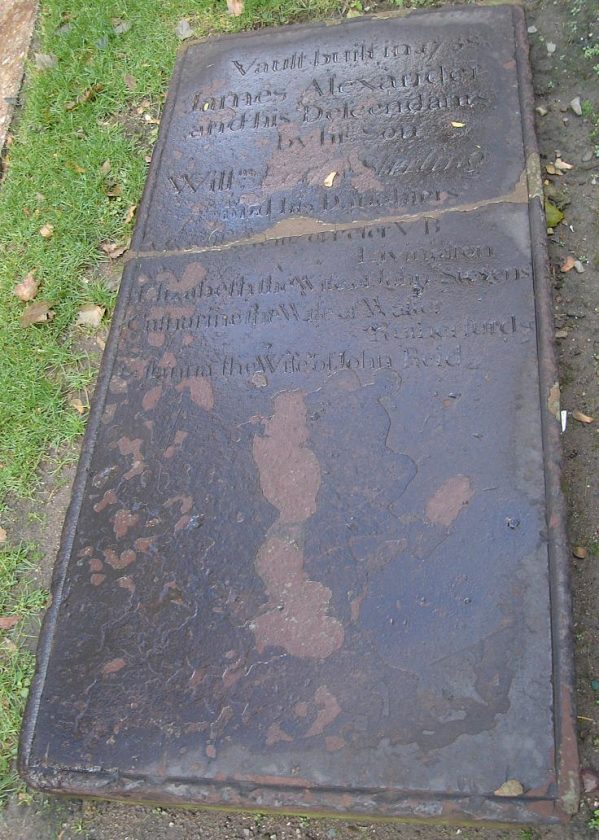
Trinity Churchyard
Manhattan, New York County (Manhattan), New York, USA
1770s Festival on the Former Alexander Estate Grounds
Held each year on the first Sunday in October, reenactors, historians, and colonial craftsmen gather to honor and showcase life in the 1770s.
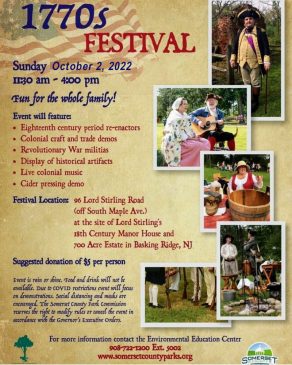
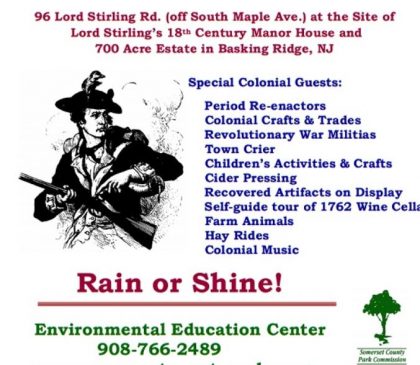
Notable Neighbors
Basking Ridge plays an important role in the Revolution. With Stirling in the area, it’s interesting to note that Elias Boudinot, the President of Continental Congress lived just up the street. It was also noted that General Charles Lee, another Major General in the Continental Army was captured just a mile away at Widow White’s tavern on South Finley Avenue on December 13, 1777. Was he traveling from Morristown to meet Stirling? And think about how many early American dignitaries visited Stirling at the Stirling Manor. George and Martha Washington visited Basking Ridge for sure. The New Jersey Governor Livingston certainly did considering his son married Stirling’s daughter. It’s such a great area for local historians. We’ll keep digging.
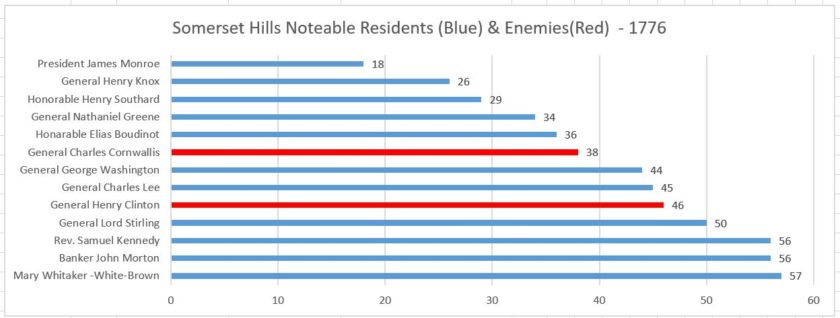
Source: Mr. Local History
Did You Know?
While William Alexander was building his country estate in 1761, Alexander and the East Jersey Proprietors authorized another home in Perth Amboy. See the video below:
- The 1636 deed to William Alexander, Earl of Stirling (Alexander’s grandfather) included New Brunswick, Nova Scotia, Nantucket, Martha’s Vineyard, and Long Island where it actually was called Stirling Island for a period.
- In October 1641, William, Earl of Stirling, deeded the “Stirling Island” to Thomas Mayhew of Watertown, Massachusetts Bay. Yes, Stirling owned Nantucket AND Martha’s Vineyard.
- In 1767, the Royal Society of Arts awarded Alexander a gold medal for accepting the society’s challenge to establish viticulture and winemaking in the North American colonies by cultivating 2,100 grape (V. vinifera) vines on his New Jersey estate.
- At the Battle of Trenton on December 26, 1776, he received the surrender of the Hessian German mercenary regiment.
- When Washington and the French Comte de Rochambeau took their conjoined armies south for the climactic Battle of Yorktown in 1781, Stirling was appointed commander of the elements of the Northern Army left behind to guard New York and was sent up the Hudson River to Albany where he died shortly after that in January 1783.
- in 1779, General Greene removed his wife and staff from the Van der Vere house to Basking Ridge. He established his headquarters at the Stirling Manor.
- Stirling’s sister Elizabeth, he was the Uncle of John Stevens III (1749–1838), a lawyer, engineer, and inventor who constructed the first U.S. steam locomotive and first steam-powered ferry, and Mary Stevens (d. 1814), who married Chancellor Robert Livingston, negotiator of the Louisiana Purchase.
- A house is built upon the foundation of the 1825 farmhouse (this house was constructed in part on the Stirling Mansion foundations and burned down in 1920) has been converted into offices for the Park Commission.
- Stirling, New Jersey is named after William Alexander.
- The Lord Stirling Manor site was added to the National Register of Historic Places on May 22, 1978.
- Sterling, Massachusetts is named after William Alexander.
Additional Mr. Local History Project Stories on This Topic
- A great article about Stirling Manor
- Lord Stirling and the Grapes
- The annual Lord Stirling Festival
- Take a look at the similar Proprietary House in Perth Amboy, New Jersey’s former capital and a home built by the same builder as Stirling Manor.
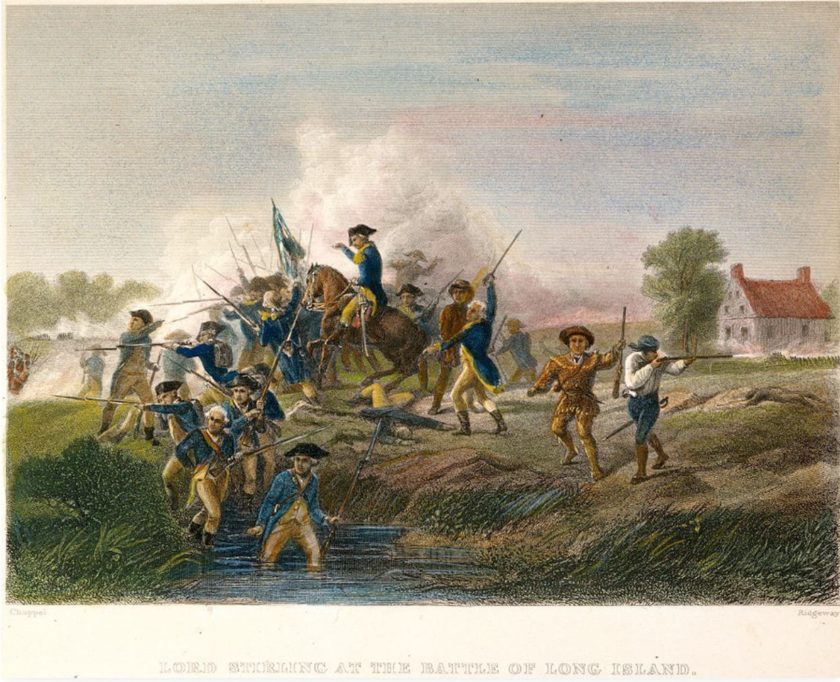
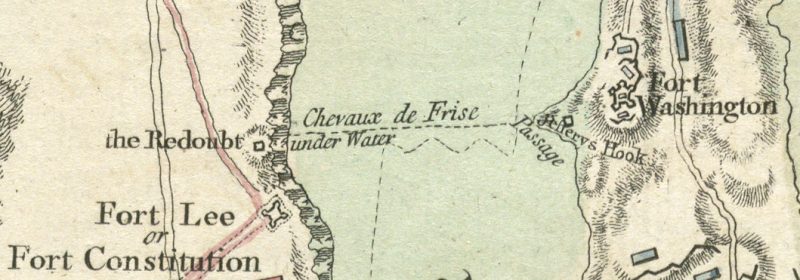

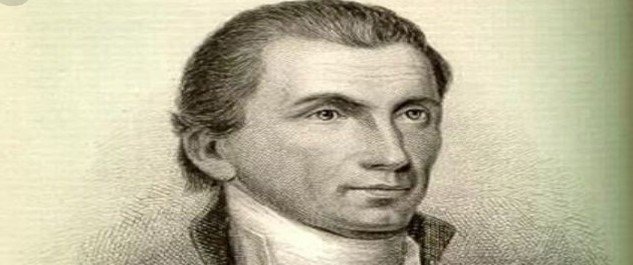
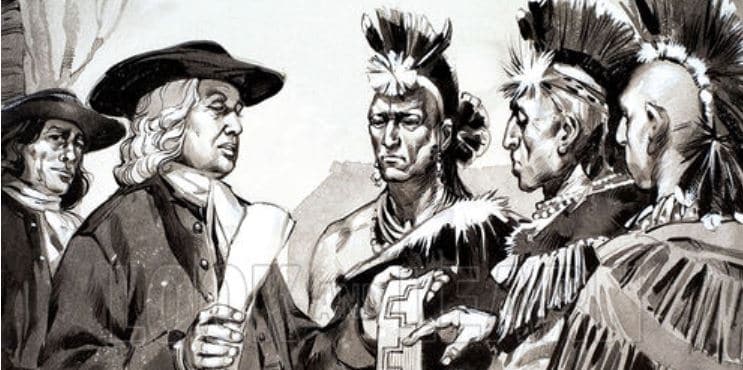

March 16, 2020
I live in Basking Ridge and am a Revolutionary war enthusiast. I found this article very interesting with far more details than what I knew about William Alexander. I have several questions:
1) Who wrote this article?
2) When is the Lord Stirling festival this year? I would like to visit the wine cellar
3) Does Basking Ridge sponsor a walking tour related to American Revolutionary War sites? (the only ones that I am aware of are Widow White’s Tavern (sign), Presbyterian Cemetery, Lord Stirling’s manor site, Boudinot estate, log hut hospital sign). I think that there would be some interest and generate some revenue for the town)
Thanks- Bob Wong
I did the research and wrote the article based on that research. The festival is typically the first Sunday in October and is run by Somerset County Parks Commission. No there’s not a walking tour currently, but I’ve written about most of the sites. The Basking Ridge Rev War hospital is a little dodgy on the facts but I might dig in at some point. Glad you liked the piece. I certainly learned a lot doing it. There’s a few good books on Stirling, who actually was quite a rascal with his lottery. But it is also sad he died heavily in debt and evidently had a bad drinking problem to boot.
As we continue the research – the interactive map is a virtual tour of many of the stories we’ve documented that impacted Basking Ridge – Check out – https://www.google.com/maps/d/u/0/viewer?mid=1Tj7UqlX8ndW1ZIFL9C93sEX7K4PHhVRt&ll=40.73559179489243%2C-74.54386265000005&z=13
Great article and I truly appreciate your efforts in gather insightful and important history about our local area. It amazes me that all of these important people who built our nation lived, worked and fought in our our backyards. Please keep it up! One thing of note, I think the compass bearing is off on the Stirling Estate map, as if you line it up with an online map of today, it would appear that E is where N should be.
Thanks for writing. You’re going to have to prove it to me. We did have to add it to the map because it wasn’t on the original we photographed.
Here is some information from Columbia University about Lord Stirling and his heavy investment in the slave trade. “William Alexander invested heavily in the slave trade. He invested in at least two voyages in 1748, and he proceeded to buy two of his own slave ships, which brought 100 slaves to New York City.” As well, the research covers the slave-trade wealth of his wife’s family (Livingston). https://columbiaandslavery.columbia.edu/content/merchant-families
Thank you so much for this information. I recently learned about an ancestor, Jacob Anderson who served under Col. Thruston out of Virginia during the Revolutionary War. According to his pension application he marched to Lord Sterlin’s building on Bareshear Ridge and was stationed there in 1777. Jacob participated in the battles/skirmishes of Piscataway and Quibbletown. I wonder if he was referring to Breses Field listed in your map.
Thanks for putting this all together! Lord Stirling was my 8x great grandfather!
@Bonnie Verberg
Lord Stirling did not have “heavy investment” in the slave trade.
He had *temporary* investment in the slave trade. He operated those 2 boats 1 time and then left the business, wanting no further involvement.
“Heavy investment” implies prolonged, sustained involvement, more than a single venture which turned him off of the whole thing.
I also find it distasteful that you show up here to attack and slander and demonize people based on common activity of the time in which they were alive.
You realize that slavery was a worldwide phenomenon then and still is today, that only a small fraction of African slaves were brought to the Americas.
You should be thanking Lord Stirling. It was due to his effort, and other slave-owning Founders, that slavery was able to be abolished.